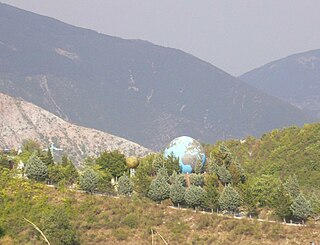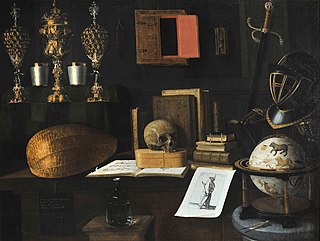 W
WThe Globe Museum is a museum in the Palais Mollard, Vienna, Austria, part of the Austrian National Library. It was opened in 1956, and is the only public museum in the world devoted to globes, being three-dimensional models of Earth or other celestial bodies, or spherical representations of the celestial sphere.
 W
WCelestial globes show the apparent positions of the stars in the sky. They omit the Sun, Moon, and planets because the positions of these bodies vary relative to those of the stars, but the ecliptic, along which the Sun moves, is indicated.
 W
WEartha is the world's largest rotating and revolving globe, located within the headquarters of the DeLorme mapping corporation in Yarmouth, Maine. The globe weighs approximately 5,600 pounds (2,500 kg), and has a diameter of over 41 feet (12.5 m).
 W
WThe Globe of Peace is a large globe located in Apecchio, Pesaro, Italy. It was the Guinness Book of World Records record holder for the world's largest rotating globe until 1999, when it was succeeded by Eartha. It was built over a period of six years by Orfeo Bartolucci, with the stated goal of diffusing a message of peace and liberty to all people. It measures 10 metres in diameter and is reported to weigh 170 quintals, or 17,000 kilograms. Reportedly 250 quintals of putty, 30 cubic metres of wood, and a ton of nails were used in its construction. The globe is located outdoors and has a fibreglass skin. It can hold approximately 600 people and internally contains descriptive tables listing every country of the world and their flag.
 W
WThe Great Vanity is a 1641 Baroque allegorical still life painting by the Alsatian artist Sebastian Stoskopff. It is on display in the Musée de l'Œuvre Notre-Dame. Its inventory number is MBA 1249.
 W
WThe Mercateum is the world's biggest globe based on a historical map.
 W
WA puzzle globe is a spherical assembly of puzzle pieces that, when put together, form a complete sphere or globe. Puzzle globes will generally have a one-piece spherical substrate that supports the puzzle pieces as they are laid in place. In some puzzle globes the substrate is steel and the puzzle pieces are magnetic, the magnetic attraction keeping pieces on the lower portion of the sphere from falling off.
 W
WSpaceship Earth is a 350,000-pound Brazilian blue quartzite sculpture created by Finnish American artist Eino. The sculpture was commissioned by Brian Maxwell of Powerbar the Maxwell Family Foundation for the late environmentalist David Brower and its name was often used by Brower referring to mankind traveling through life in a common vehicle. Today the sculpture is located at Kennesaw State University adjacent to the Social Science building, the first LEED-certified building at the University System of Georgia.
 W
WThe Unisphere is a spherical stainless steel representation of the Earth in Flushing Meadows–Corona Park, in the New York City borough of Queens. The sphere, which measures 140 feet (43 m) high and 120 feet (37 m) in diameter, was designed by Gilmore D. Clarke as part of his plan for the 1964 New York World's Fair.
 W
WGlobus IMP instruments were spacecraft navigation instruments used in Soviet and Russian crewed spacecraft. The IMP acronym stems from the Russian expression Indicator of position in flight, but the instrument is informally referred to as the Globus. It displays the nadir of the spacecraft on a rotating terrestrial globe. It functions as an onboard, autonomous indicator of the spacecraft's location relative to Earth coordinates. An electro-mechanical device in the tradition of complex post-World War II clocks such as master clocks, the Globus IMP instrument incorporates hundreds of mechanical components common to horology. This instrument is a mechanical computer for navigation akin to the Norden bombsight. It mechanically computes complex functions and displays its output through mechanical displacements of the globe and other indicator components. It also modulates electric signals from other instruments.